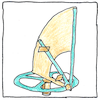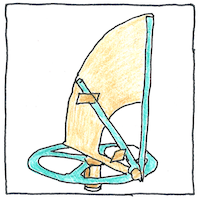Pedro Nunes
metrology
astronomy

|
Nonius
Tycho Brahe put a nonius on his astronomic quadrant to improve the accuracy of his stellar observations. The astrolabe with alidade is an ancient instrument. Soon after Nunes invented the nonius, astrolabes became obsolete.
Nonius arcs
Provide forty-four arcs along fixed positions on the alidade closer and closer to its pivot point and spanning ninety degrees. Divide the arcs into fewer and fewer divisions, from ninety to forty-six. intending a precision impossible to effect with any geometric process, but when the alidade aligns most closely to a division on any arc, both the arc and division give you the degrees from a table.
Nonius riffs
Nonius, nonius, give me no lie. The nonius is ready; the table is nigh. Give me your nonius and I’ll tell you why. With your nonius I’ll tell you by and by. Two stars and a nonius make no constellation. Mark my words but not my nonius. Use your nonius and point me to the station. The man has a face but no nonius. Draw a circle; draw a line. Inscribe the star’s arc super fine. Onus or bonus, use your nonius. Where hangs the star that shines?



The vernier scale was a refinement of the nonius and is still called a nonius in some languages. Both designs improve accuracy by taking advantage of our ability to recognize how closely two lines are aligned. Reliable machines for drawing and marking arcs, called dividing engines, were not available until we get to Henry Hindley around 1739.
See also in The book of science:
Readings in wikipedia: